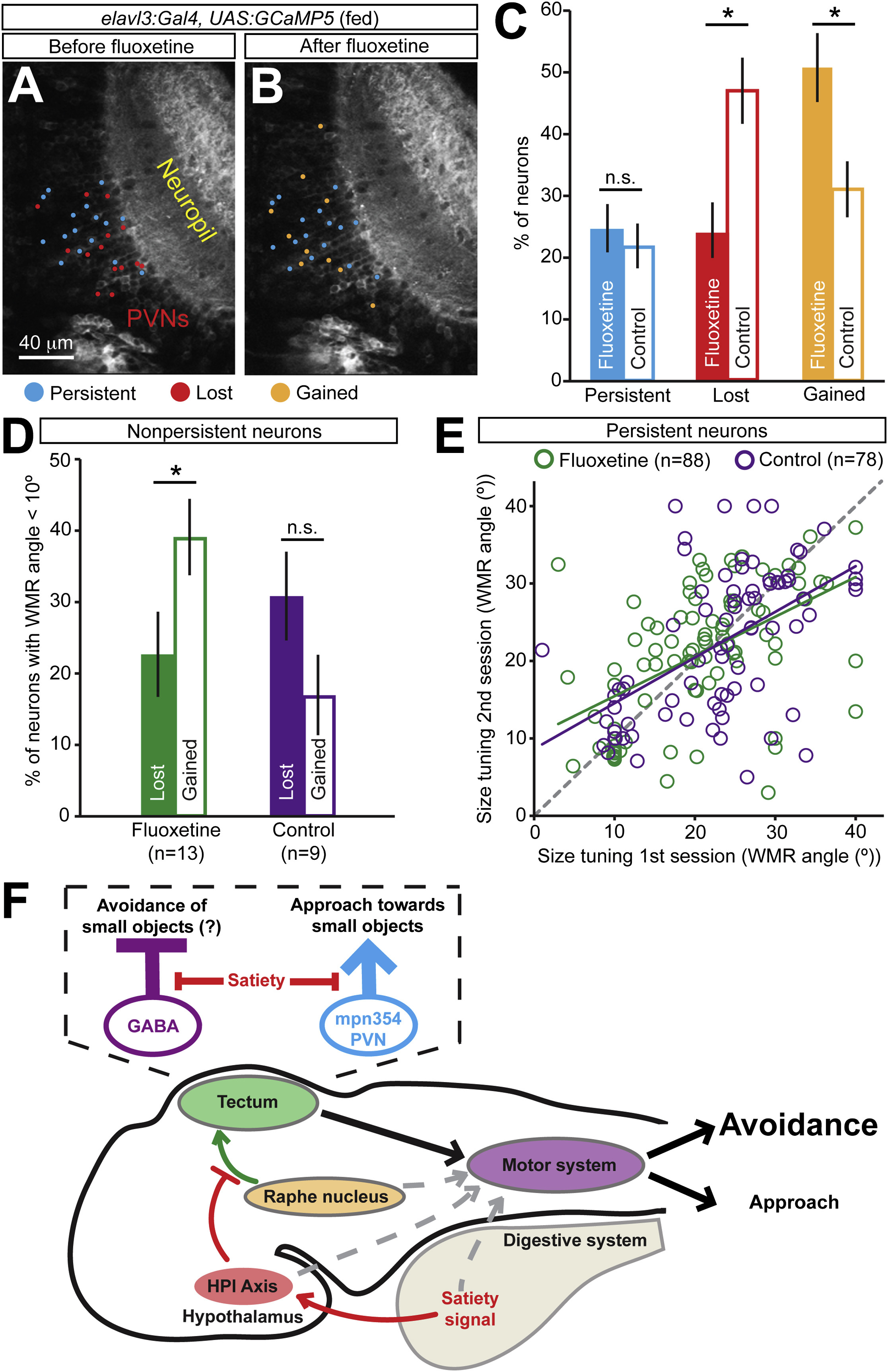Fig. 8
Serotonin Activates a Population of Tectal Neurons Tuned to Small Visual Stimuli in Fed Larvae
(A and B) Two-photon images of a tectum of a fed 7 dpf elavl3:Gal4, UAS:GCaMP5 larva before (A) and after (B) application of 1.5 µM fluoxetine for 3.5-4 hr. PVN, peri-ventricular neuron.
(C) Bar graph showing the average percentages of neurons active only in the first (lost) or second (gained) recording session, or at both times (persistent). In the first session, fed 7 dpf elavl3:Gal4, UAS:GCaMP5 larvae were imaged. In the second session, the same animals were imaged again in the absence (control group) or presence of fluoxetine. *p < 0.04; n.s., not significant (t test with Benjamini-Hochberg correction). n = 13 (fluoxetine) and 9 (control) larvae.
(D) Average percentages of nonpersistent neurons (corresponding to the “lost” and “gained” groups in C) tuned to small-sized visual stimuli. *p = 0.05, paired t test. Error bars represent SEM.
(E) Scatterplot displaying WMR angles of persistent neurons in the first and second imaging sessions. Each circle represents a neuron. No statistically significant differences between the two groups were detected (p = 1, ANOVA). n = number of neurons. The green and purple lines represent linear regressions of the data relative to the fluoxetine-treated (r2 = 0.26) and control (r2 = 0.27) group, respectively. The dashed gray line marks the position occupied by data points relative to neurons whose response properties were the same in the two imaging sessions.
(F) Scheme summarizing the results. A satiety signal, potentially from the digestive system, activates the HPI axis, which, in turn, inhibits serotonergic neurons in the raphe nucleus sending axons to the tectum. Satiety may alter visuomotor transformations in the tectum in at least two ways (inset). First, it may increase avoidance of small objects by inhibiting a population of GABAergic neurons responsive to small- and medium-sized visual stimuli. Second, it decreases pursuit of small objects by inhibiting mpn354 PVNs. This modulation biases downstream motor circuits toward avoidance of small- and medium-sized objects. Additional fine-tuning by feeding state of other neural circuits could also contribute to the final behavioral choice (gray dashed arrows).

